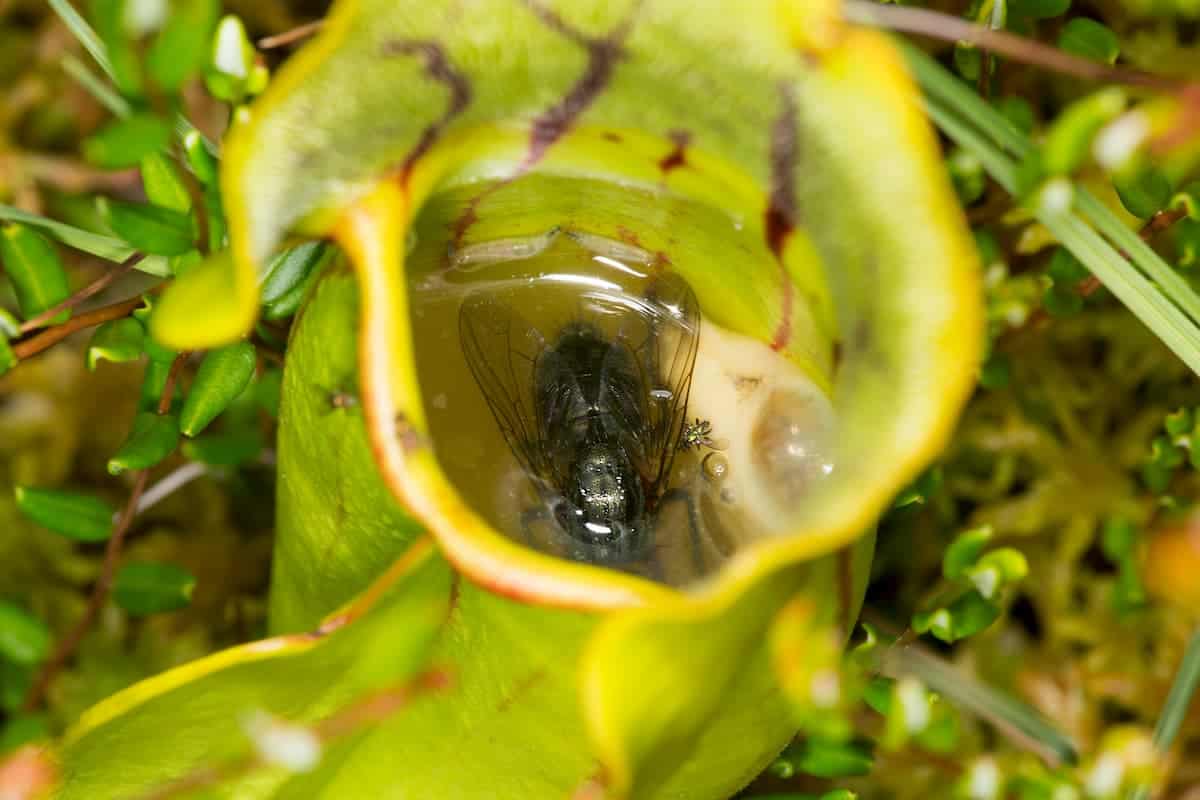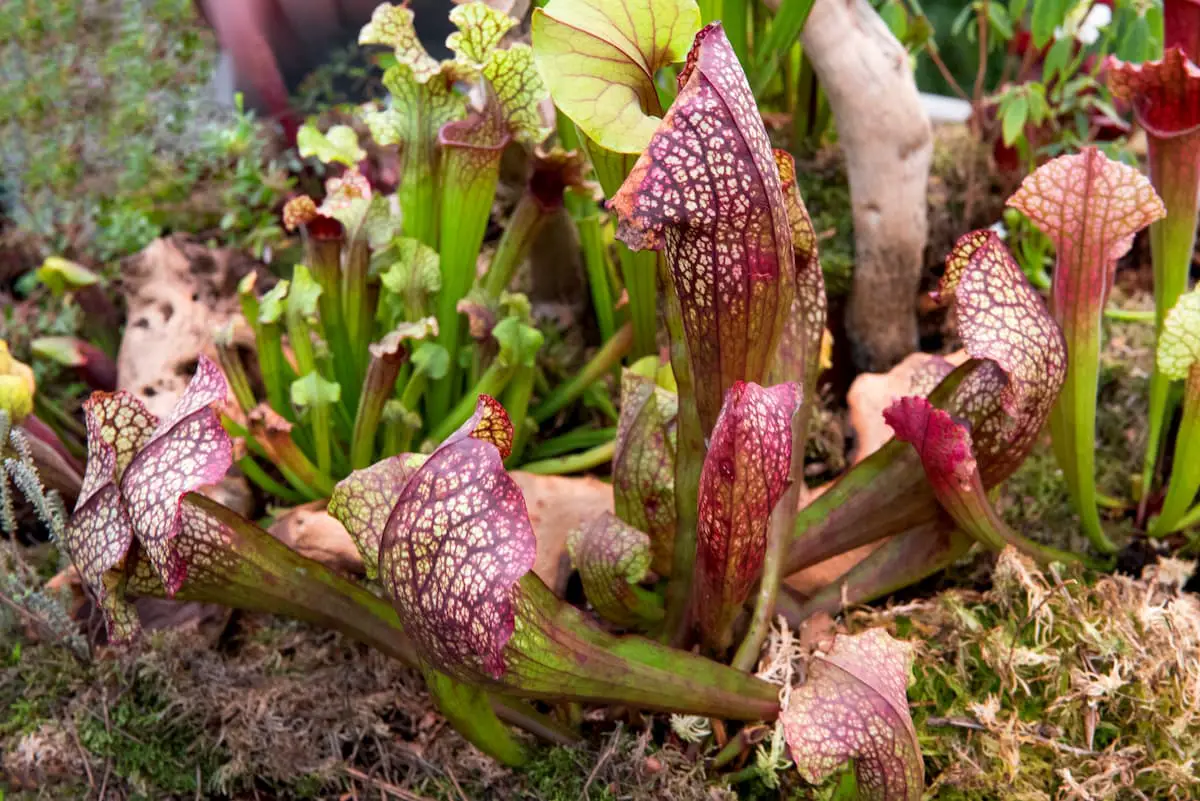Caring for these wondrously alien plants can be tricky, especially if you’ve never owned one before. There’s a lot of specialized care you’ll need to give them, including being conscious of one thing: What nutrients do carnivorous plants get from insects?
They mostly get nutrients like nitrogen and phosphorus which help them to grow larger and flourish more. In fact most carnivorous plants can survive just fine without eating insects for months. Just for better and more optimal growth they take nutrients from the insects.
Due to the fact that many carnivorous plants come from areas that have poor soil, they will not get their nutrients from the ground and instead must absorb the nutrients from the insects they catch. This does expend energy however, meaning that overfeeding a carnivorous plant will essentially tire it out and kill it.
Why is The Balance of Nutrients so Important?
Normally, a plant will get the nutrients that it needs from the soil. The main one of which that will be focusing on here is nitrogen. Due to the aforementioned growing conditions of the carnivorous plant, it is not accustomed to being able to absorb the nitrogen that it needs from the soil.
This is a trait that the plant has adapted from being grown in areas of the world that have incredibly poor nitrate content in the soil, resulting in bad growing conditions.
The nitrogen that the plant absorbs is the main focus here and likely the most essential nutrient when talking about any plant growth due to the fact that it is one of the key components in the amino acids that a plant produces, which in turn are responsible for the proteins that it needs to survive.
So, you might be thinking that you surely can’t overfeed something with too much goodness, right? However, the issue isn’t that the plant will have too many nutrients when you are feeding it, rather the issue is that the plant will have too little energy, or simply be unable to absorb other nutrients that it needs because of an excess of nitrogen.
Even though carnivorous plants are capable of absorbing energy using their leaves through photosynthesis, like most plants, if you overfeed it then it simply will not have the energy reserves to process all of the food.
The Visual Effect of Overfeeding a Carnivorous Plant?
If you aren’t sure that you’ve already overfed your carnivorous plant, or want to know what to keep an eye out for, then there are some basic rules you can follow that also apply to other types of plants.
In the case of normal plants, too little nitrogen will result in the fairly obvious dry, brown and withered leaves. In the case of a carnivorous plant, the same principle applies, but it can also happen if you have badly overfed the plant.
The slow digestion of the carnivorous plant will essentially cause it to be flooded with too much nitrogen and much of the plants energy will be spent on attempting to process the excess of nutrients. This will result in it either having too little of other nutrients or too little energy to sustain itself.
Since nitrogen is one of the nutrients that are responsible for a plant having healthy looking leaves, an excess can also cause the plant to begin looking excessively green.
Accompanied by the unnatural color of the plant, you will notice that it is becoming significantly more leafy, covered in unwanted foliage. All of these new appendages to the plant, and the structure of the plant itself, will become weak and flimsy.
Almost immediately after this you will notice that the plant will begin to “burn” in color, slowly transitioning from green to brown.
What is the Correct Amount to Feed a Carnivorous Plant?
If your carnivorous plant is outdoors, you won’t need to worry at all. The plant will know exactly how much nutrients it needs and will hunt accordingly, only catching insects when it has to.
If your plant is indoors however, you’ll need to feed it a little. Contrary to what you might expect, you won’t need to go feeding it every single day or catching enormous insects to satiate some ever-consuming hunger.
Not only will the plant be able to go an incredibly long time without feeding, no doubt a trait developed due to it’s propensity for growing in hostile environments, it will even continue to grow slowly in this state.
To keep it healthy and happy, however, you should be attempting to feed it at least once every week, although only a few times a month will suffice as well. This is partly because of the slow digestion of the plant, even a small meal will keep it going for a long time.
Also, one other thing to consider if you have something like a Venus flytrap, is that it may enter a state of sleep during certain periods. It could be processing nutrients, reserving energy for growth, or any other number of behaviors.
If the plant is in this state, do not attempt to feed it, as you will risk harming the plant or draining it of much needed energy that it is reserving for the following season.
The other consideration is portion size. Generally, you should try to keep the portions incredibly small, they should be nowhere near the size of the trap that you are feeding.
This is because of the fact that if a portion is too large, there is a risk that the food will become either stuck and undigested, or flood the plant with far too many nutrients for it to be able to absorb or deal with.
What is the Best Food?
As is expected from the name, the carnivorous plant would prefer to feast on something live, namely insects. If there are no insects readily available, or if it is an indoor plant, then you do have some other options.
One thing to keep in mind with many of these alternatives is the fact that you will be required to stimulate the traps manually, to simulate the feeling of a live insect, otherwise the plant will not “bite”, so to speak.
Fish pellets in particular are a fantastic choice. They are packed with many essential nutrients that the carnivorous plant can use and they are easy to manage.
Also, because of the slow digestion and low food requirement of the plant, a package of fish pellets will last you an incredibly long amount of time.
Bloodworms are a similarly easy option, though you should be careful with mealworms, as they have the potential to damage or escape the feeding traps.
One other option is feeding your carnivorous plant fertilizer. Going this route can easily lead to the overfeeding issue, however. Since fertilizer will be absolutely packed with nitrogen, feeding it to a carnivorous plant carries the risks that were mentioned above, where the plant will no longer have the energy to process the food it has been given.
If you do decide to try using a fertilizer, ensure that it’s a safe brand with no toxins and use incredibly tiny, sparing doses, at least until you get a feel for how much the plant needs.
Final Thoughts on Nutrition for Your Carnivorous Plant
Managing your carnivorous plants life and nutrition should be important to you but you don’t need to feed them constantly and really may be best to let nature run its course.
Instead feed them every so often, like monthly maybe, and that overfeeding them isn’t good for their growth or health and can kill them prematurely! Hopefully you enjoy your plants and get them growing into your own carnivore garden!




Leave a Reply